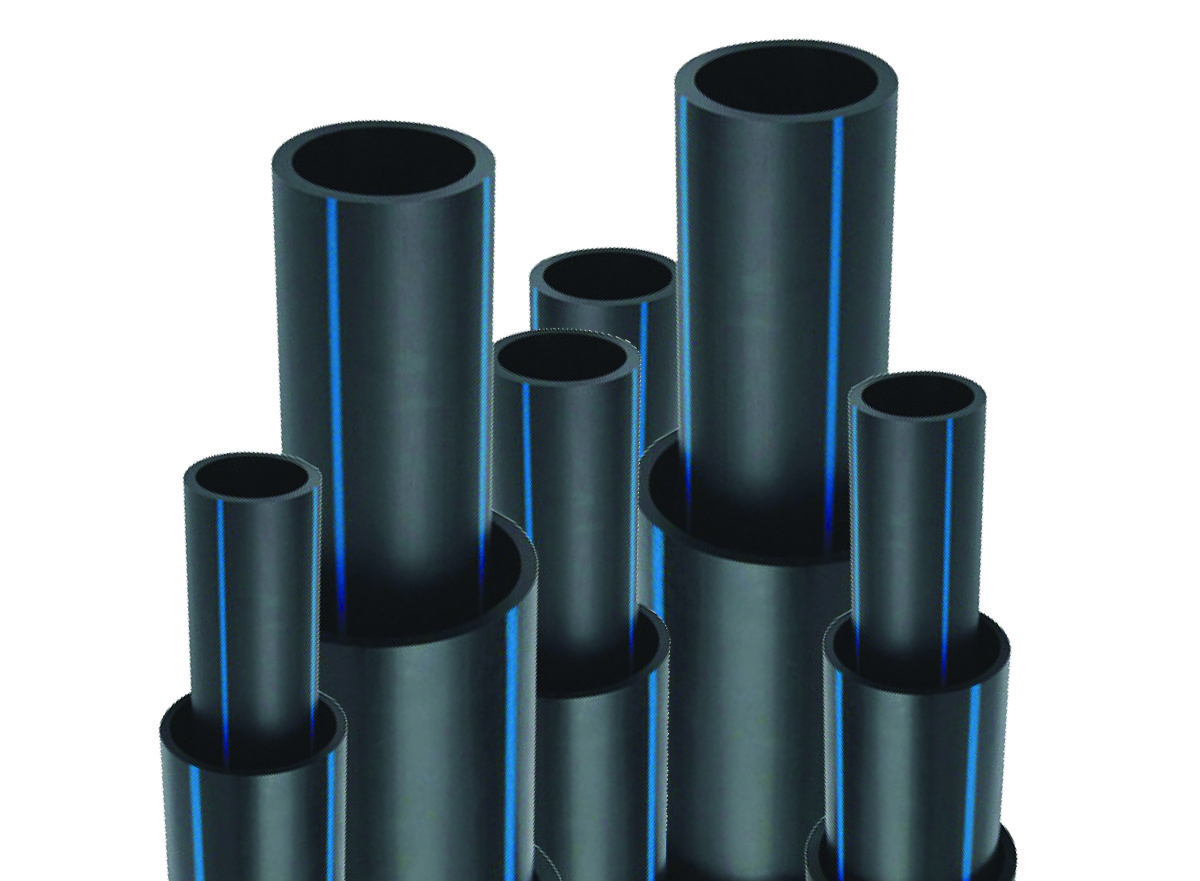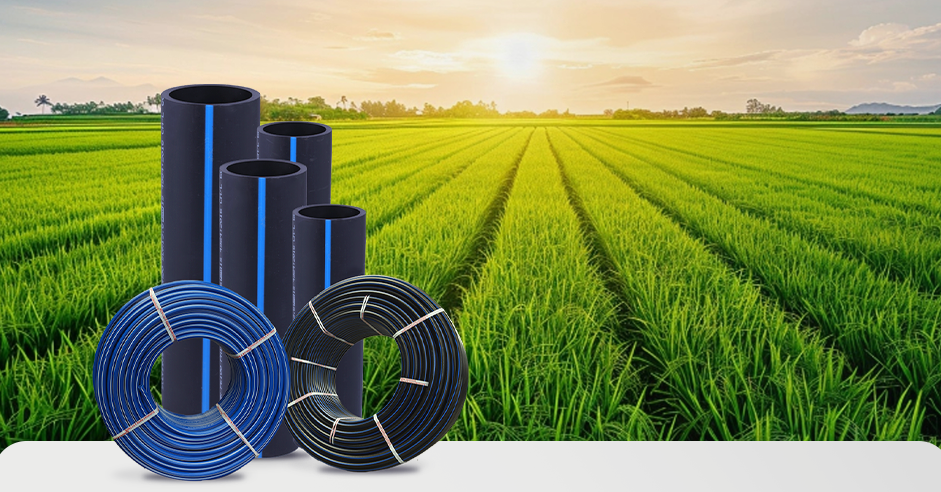Check Out the Production Process Behind High-Quality HDPE Pipe and Its Applications
The manufacturing process of high-quality HDPE pipelines is intricate and methodical. It begins with the option of basic materials that boost performance. Following this, ethylene undergoes polymerization to create resin, which is after that formed via extrusion. Quality control is vital, making certain that the end product satisfies strict criteria. The journey of HDPE pipelines does not end with production. Their applications across numerous sectors reveal a broader significance worth taking a look at.
Understanding HDPE: Characteristics and Advantages

High-density polyethylene (HDPE) is a flexible polycarbonate understood for its longevity and resistance to numerous ecological elements. This material displays superb tensile stamina, making it suitable for requiring applications. Its low-density framework adds to a light-weight product, promoting ease of handling and setup. HDPE additionally showcases amazing resistance to chemicals, which minimizes degradation when exposed to severe substances.
The product's reduced wetness absorption further enhances its long life, making it suitable for use in pipelines and storage tanks. Furthermore, HDPE is resistant to ultraviolet (UV) radiation, guaranteeing that items preserve their honesty also when revealed to sunshine. Moreover, its flexibility permits the development of complex forms without jeopardizing stamina. The environment-friendly nature of HDPE, commonly originated from recycled products, includes in its allure, advertising lasting methods in manufacturing. Overall, these properties and advantages make HDPE a favored choice for numerous commercial and consumer applications.
Basic Material Option for HDPE Production
The choice of resources for HDPE manufacturing is important to verify the end product meets the desired specifications and quality standards. High-density polyethylene (HDPE) is mainly created from polymerized ethylene, obtained from fossil gas such as all-natural gas or petroleum. The high quality of these feedstocks considerably influences the mechanical and thermal residential properties of the last HDPE.
Ingredients also play a substantial role in boosting HDPE's performance, including antioxidants, UV stabilizers, and colorants, which enhance sturdiness and resistance to environmental variables. The selection process have to think about not only the chemical make-up of the raw products yet also their handling characteristics to guarantee effective production.
The sourcing of raw materials should prioritize sustainability and compliance with environmental laws, as liable practices are critical in today's market. Eventually, cautious resources choice lays the foundation for producing top notch HDPE pipes suitable for varied applications.
The Extrusion Process: Forming HDPE Pipe
The extrusion process plays an essential function in forming HDPE pipelines, beginning with precise product preparation techniques that assure suitable flow and consistency. Just as important is the layout of the die, which directly influences the final measurements and surface area high quality of the pipe. Together, these elements add significantly to the performance and top quality of HDPE pipe manufacturing.
Material Preparation Techniques
Efficient manufacturing of HDPE pipelines begins with meticulous product preparation techniques, especially the extrusion procedure. During this stage, high-density polyethylene resin is very first dried out to get rid of moisture, making sure optimal circulation qualities. The material is then fed right into the extruder, where it undertakes home heating and melting, transforming into a viscous state. This heating procedure is thoroughly managed to preserve the material's stability and performance. The liquified HDPE is required with a die, forming it into a continual pipe type. Appropriate temperature level administration throughout extrusion is vital, as it directly influences the material's homes and the last product quality. As soon as shaped, the HDPE pipe is cooled down and reduced to defined sizes, ready for subsequent processing and applications.
Die Design Relevance
Accuracy in die design plays a crucial duty in the extrusion process of HDPE pipelines. The die offers as the last shaping tool, straight influencing the pipe's measurements, wall thickness, and surface finish. A well-designed die assurances consistent material circulation, minimizing flaws such as irregularities and weak points. The geometry of the die need to be maximized to accommodate the details homes of HDPE, including its viscosity and thermal habits during extrusion. Additionally, the cooling rate of the product as it goes through the die can substantially impact the pipe's structural honesty. Spending in sophisticated die innovation is essential for manufacturers aiming to create high-grade HDPE pipes that meet industry standards and client assumptions.
Quality Assurance Measures in HDPE Manufacturing
Numerous variables influence the top quality of HDPE pipeline manufacturing, effective high quality control actions are critical to assure consistency and integrity in the final product (Pipe Supplier American Plastics Midland). Trick quality assurance methods consist of rigorous product assessment, confirming that the raw polyethylene satisfies well established requirements for purity and density. Throughout the extrusion process, criteria such as temperature, stress, and cooling time are carefully checked to keep dimensional accuracy and architectural stability
Furthermore, post-production testing is vital; manufacturers usually perform hydrostatic tests to assess the pipeline's toughness and resistance to pressure. Aesthetic examinations for surface area defects additionally enhance quality guarantee. Accreditation from pertinent standards organizations, like ASTM or ISO, offers an added layer of reputation. By executing these detailed quality assurance steps, producers can minimize defects, boost performance, and make sure that the HDPE pipelines meet the details demands of numerous applications, ultimately resulting in client contentment and count on in the product.
Applications of HDPE Pipe Throughout Industries
HDPE pipelines are used across numerous fields as a result of their resilience and versatility. In water distribution systems, they ensure effective shipment, while in wastewater monitoring, they supply reputable solutions for waste transportation. Furthermore, agricultural irrigation networks gain from HDPE's resistance to corrosion and adaptability, making it a perfect option for modern-day farming methods.

Water Distribution Solutions
A substantial variety of industries count on high-density polyethylene (HDPE) pipelines for effective water circulation systems. Understood for their toughness and resistance to rust, HDPE pipelines are commonly used in local water system networks, farming irrigation, and commercial applications. Their lightweight nature promotes simple handling and setup, minimizing labor prices and time. Additionally, HDPE pipes can fit numerous stress levels, making Find Out More them suitable for both reduced and high-pressure systems. hdpe pipe fittings Midland TX. The adaptability of the product permits seamless combination right into existing infrastructure, reducing the need for extensive excavation. In addition, HDPE's resistance to chemical leaching guarantees that the water provided stays secure and clean, making it an excellent selection for keeping the quality of drinkable water across numerous fields
Wastewater Monitoring Solutions
Efficient water distribution systems likewise lead the way for ingenious wastewater administration options, where high-density polyethylene (HDPE) pipelines play a significant function. Popular for their longevity and resistance to corrosion, HDPE pipes are perfect for delivering wastewater in numerous setups. Their versatility permits very easy setup in complicated environments, reducing the need for comprehensive excavation. Furthermore, HDPE's smooth interior surface area reduces friction, enhancing flow prices and effectiveness. These pipes are additionally immune to chemical leaching, guaranteeing that Continued pollutants do not endanger the surrounding environment. Industries, communities, and therapy centers significantly rely on HDPE pipelines for their integrity and long life, making them a preferred selection for modern-day wastewater monitoring systems. This adaptability highlights the crucial significance of HDPE pipes across numerous applications.
Agricultural Watering Networks
Agricultural watering networks benefit considerably from making use of high-density polyethylene (HDPE) pipes, which provide effective and trusted water shipment to plants. HDPE pipelines are lightweight, making them simple to transfer and mount, while their versatility enables for various configurations in varied surfaces. These pipelines demonstrate excellent resistance to rust, chemicals, and UV radiation, guaranteeing durability in severe farming environments. In addition, their smooth indoor surface decreases friction loss, optimizing water flow and lowering energy prices connected with pumping. The long life of HDPE pipes, often exceeding half a century, contributes to lower maintenance and substitute expenses. Consequently, farmers increasingly count on HDPE pipelines to improve watering effectiveness and advertise sustainable agricultural practices, ultimately resulting in enhanced crop returns and source preservation.
Future Patterns in HDPE Pipe Technology
As the need for lasting and effective facilities expands, innovations in HDPE pipe modern technology are positioned to change different industries. Emerging patterns include the assimilation of wise modern technologies, such as sensors and IoT capacities, which promote real-time surveillance of pipeline conditions, decreasing maintenance prices and protecting against leakages. Additionally, the advancement of advanced production techniques, such as 3D printing, is allowing the production of complicated, tailored pipe styles that cater to particular job demands.
Furthermore, the emphasis on recycling and circular economic climate methods is driving the development of HDPE pipes made from recycled products, boosting sustainability. Enhanced jointing techniques, such as electro-fusion and mechanical installations, published here are also enhancing installment performance and dependability. Lastly, the growing emphasis on ecological guidelines is pressing manufacturers to take on greener manufacturing procedures, guaranteeing that HDPE pipelines not just meet industry criteria however additionally promote a more lasting future for framework growth.
Frequently Asked Questions
How Does HDPE Contrast to Other Plastic Materials?
HDPE exceeds several various other plastic materials relating to resilience, chemical resistance, and flexibility. Its reduced thickness and high tensile toughness make it optimal for various applications, often going beyond alternatives in both performance and longevity.
What Are the Environmental Impacts of HDPE Manufacturing?
The environmental impacts of HDPE manufacturing include greenhouse gas discharges, energy usage, and prospective contamination from making processes. Furthermore, inappropriate disposal can result in soil and water contamination, raising issues about lasting environmental effects.
Can HDPE Piping Be Recycled?
Yes, HDPE pipes can be recycled. Numerous centers approve used HDPE for processing, changing it right into brand-new products. This recycling adds to sustainability efforts, decreasing plastic waste while saving resources and energy in the manufacturing cycle.
What Is the Lifespan of HDPE Pipeline?

Exactly How Do Temperature Variants Influence HDPE Pipe Performance?
Temperature level variants substantially impact HDPE pipeline performance, impacting flexibility and toughness. Heats can result in softening, while low temperatures might create brittleness, inevitably affecting the pipe's sturdiness and viability for various applications in diverse atmospheres.